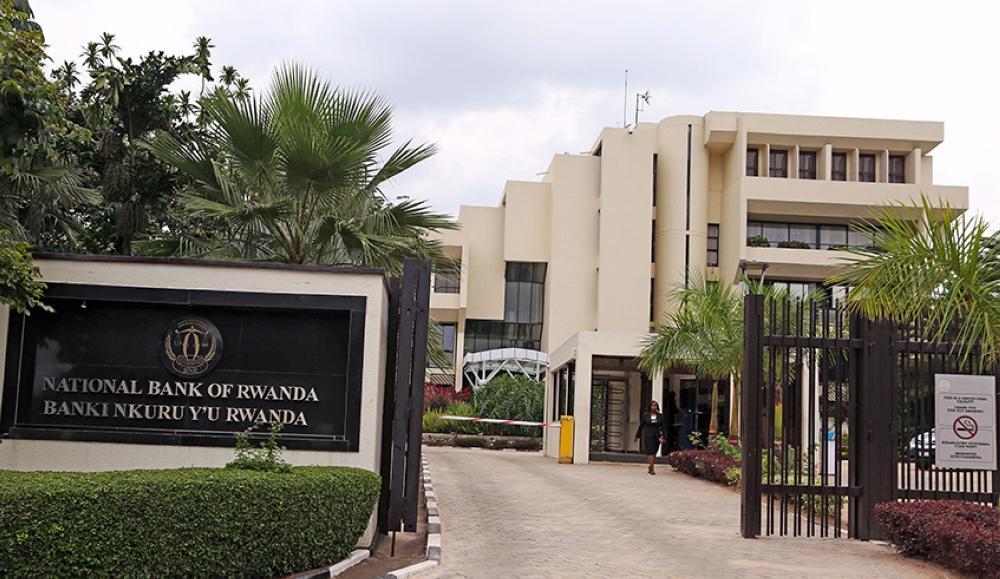Africa-Press – Rwanda. The National Bank of Rwanda (BNR) is exploring the development of a Central Bank Digital Currency (CBDC) – a digital version of the Rwandan franc (e-Franc-Rwandais).
On August 1, BNR launched a retail CBDC ideathon, inviting individuals, fintechs, startups, and innovators to contribute ideas that could shape Rwanda’s digital currency future.
The ideathon is held in collaboration with Giesecke+Devrient (G+D), a German tech firm specialising in digital security and currency technology.
This initiative falls under the proof-of-concept (PoC) phase of CBDC development, the second of five stages outlined by the International Monetary Fund (IMF). These stages are preparation, proof-of-concept, prototype, pilot, and production.
What is a CBDC?
CBDC is digital money issued and regulated by a central bank, holding the same legal status as physical cash.
There are two types of CBDC: retail CBDC for public use, similar to cash or mobile payments, and wholesale CBDC for use by financial institutions for interbank transactions.
A CBDC can be account-based (linked to identity, tracked by a third party) or token-based (like physical cash, bearer-based, requiring no intermediaries).
Bobson Rugambwa, the Chief Executive Officer of Mvend, a Rwandan fintech company building payment and banking technologies, told The New Times that the development of a CBDC should take into consideration the ease of use for it to be successful.
“If there’s going to be large scale adoption of the CBDC, there should be easily accessible technology for anyone to use it. This however holds true if the use cases chosen are retail and mass-use focused,” Rugambwa observed.
Rwanda’s current CBDC testing phase
BNR is currently conducting closed-loop proof-of-concept testing with a limited number of participants, including commercial banks and merchants.
Key features under evaluation include offline payment capabilities, USSD access for feature phones, and cybersecurity and legal compliance.
This proof-of-concept stage helps build understanding of the technology, user experience and potential risks.
The project spans five months, with results expected by October 2025. However, a launch is not guaranteed as the findings will inform whether to proceed to a live pilot phase or scale further, according to the central bank.
The four ‘sweet spots’
BNR has identified 15 potential opportunities, narrowing in on four “sweet spots,” which are high-impact, feasible benefits that align with national priorities, according to a research paper on Rwanda Central Bank Digital Currency (CBDC) based on a 2023 study.
Let’s look at the sweet spots and the reasoning behind them, as explained by the central bank.
1. Resilience against disruptions
While Rwanda has improved electricity reliability, power outages still affect parts of the country, especially rural areas, disrupting digital payment systems.
A well-designed CBDC could function offline, even during power or network outages, enable secure peer-to-peer transfers without intermediaries or connectivity, and ensure continuous payment services during natural disasters or emergencies.
The CBDC’s potential for consecutive offline transactions could improve financial inclusion, especially in remote or underserved communities.
2. Innovation and competition
Rwanda’s cashless ecosystem is dominated by mobile money, particularly services by MTN and Airtel, which together accounted for 70 per cent of transfers as of 2022. This duopoly leads to high transaction fees (for instance 0.5 per cent merchant fees), and limited competitive pressure on pricing or service improvements, according to the BNR study.
A digital currency could serve as a low-cost payment alternative, spurring competition and innovation. By offering a universally accessible and secure digital payment, the central bank argues that the CBDC could level the playing field for new market entrants.
3. Cheaper, cashless system
Despite the growth of mobile money systems, cash transactions remain widespread, while the country continues to incur cash handling costs.
Cash in circulation in Rwanda increased by over 50 per cent to about Rwf305 billion between 2019 and 2022, authors of the research paper said.
Cash withdrawals and deposits surged by over 70 per cent, while cash processing costs reached over $30 million between 2018 and 2022. These costs are projected to reach $35 million between 2023 and 2027.
The CBDC could help reduce cash printing and minting expenses, as well as infrastructure for cash storage, transport, and destruction of worn-out banknotes which require significant investment in machines and come with associated operational and administrative expenses.
It would also cut reliance on physical money, supporting the national cashless agenda.
Mvend’s Rugambwa said that a CBDC is likely to fast-track the full adoption of cashless payments, which would remove the cost of handling cash for businesses as well as the central bank’s cost of printing and maintaining bank notes and coins.
“Retail use of the CBDC should be the focus to be able to bring in as many users as possible. This helps to learn fast and iterate on what works and what doesn’t,” he said, indicating that person-to-person and person-to-business use cases should be the priority.
4. Faster, cheaper, transparent remittances
According to a 2022 brief prepared by the Global Knowledge Partnership on Migration and Development for the World Bank, Sub-Saharan Africa remained the costliest developing region to which remittances are sent. For example, the authors said, a Ugandan migrant sending $200 in remittances from Tanzania to neighbouring Uganda pays 29.7 per cent of the amount.
Sending remittances from Tanzania to Rwanda is among the top three most expensive corridors.
Retail CBDC could enable faster and cheaper remittance services, promote greater transparency in cross-border transactions, simplify integration within regional payment systems such as the East African Monetary Union.
A common regional CBDC, backed by multiple central banks, could eliminate currency conversion needs and reduce foreign exchange risks.
Is CBDC meant to replace cash or cards?
The central bank says that the digital currency will not replace cash. A CBDC is intended to complement existing payment methods such as mobile money, credit or debit cards, and physical cash.
It adds another layer of convenient, inclusive, and more secure payment options for consumers, the central bank noted.
Key differences from cryptocurrency
Cryptocurrencies are another form of digital tokens. They allow people to make payments directly to one another through an online system. However, cryptocurrencies have no legislated or intrinsic value as they are not regulated and are only worth what people want to pay for them. They are also prone to speculation.
Although a CBDC uses cryptographic security, it differs from cryptocurrencies in that it is centrally issued and managed by the central bank.
It is backed 1:1 by legal tender, implying no volatility, nor speculation. It has guaranteed merchant acceptance and legal status.
For More News And Analysis About Rwanda Follow Africa-Press






